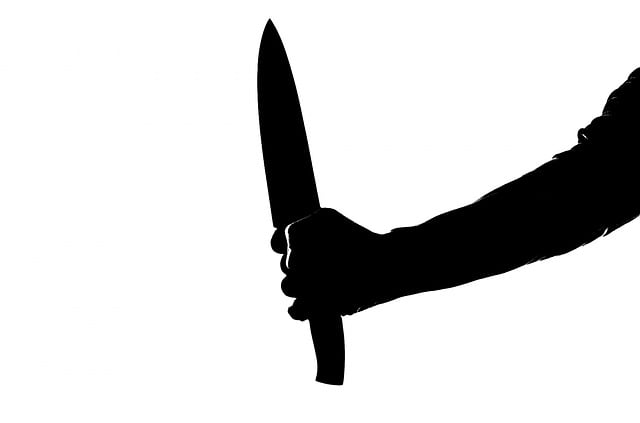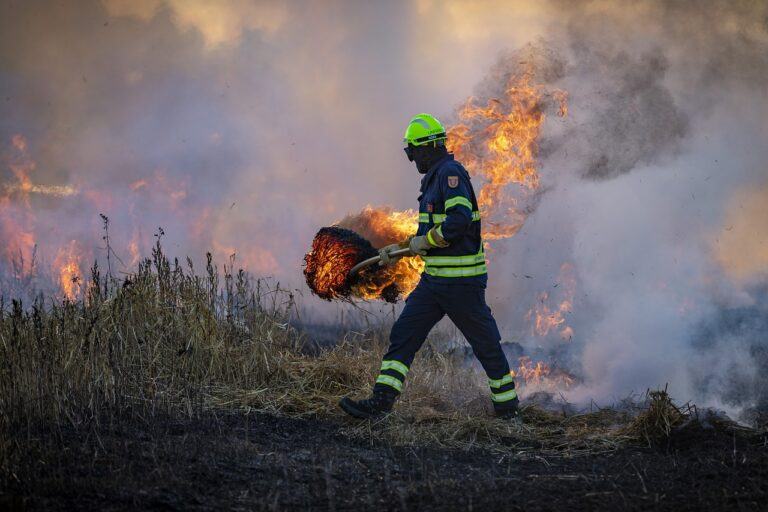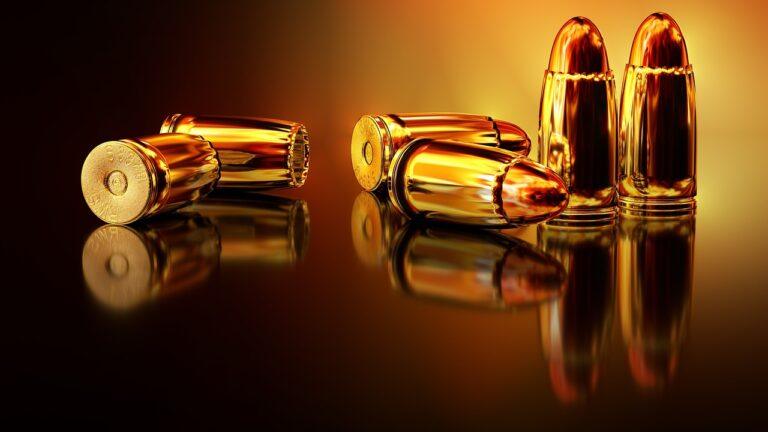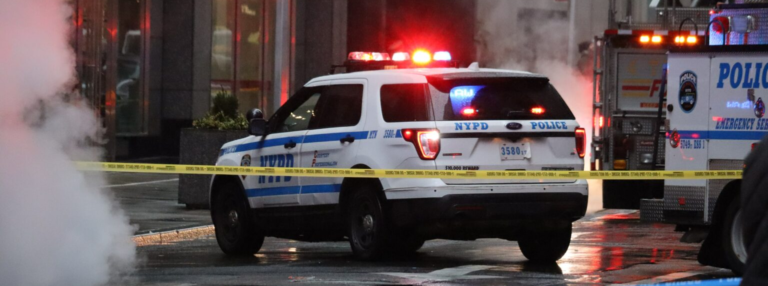5 Essential Wound Patterns Found at Crime Scenes
In the world of forensic investigations, the forensic analysis of wound patterns takes on a profound significance. Wound patterns and injuries, often left as silent witnesses to acts of violence, offer valuable insights into the mysteries surrounding a crime.
The examination of wounds, whether they result from penetrating injuries, blunt force trauma, thermal burns, or gunshot wounds, holds the potential to unravel critical details about the circumstances of a crime.
Therefore, understanding the types and characteristics of various wound patterns is akin to reading a narrative left behind by the victim, revealing the nature of the weapon used and shedding light on the behavior of the perpetrator.
Forensic analysis of wound patterns forms an essential pillar of criminal investigations, providing investigators and law enforcement agencies with crucial leads to identify both the weapon used in the commission of a crime and the potential identity of the perpetrator.
In the following sections, we will dissect the various types of wound patterns and dive into how they can reveal the weapon used and provide insights into the actions of the perpetrator.
Types of Wound Patterns and Injuries
Wounds and injuries in forensic analysis vary greatly in type and characteristics. Let’s explore them.
- Penetrating Wounds: These wounds result from sharp objects or projectiles entering the body.
- Characteristics: Size, shape, and depth of penetration offer vital clues.
- Blunt Force Injuries: Caused by forceful impact, these injuries often leave distinct patterns.
- Characteristics: Pattern, severity, and location of impact inform the analysis.
- Thermal Injuries: Burns and scalds can provide insight into the nature of the burn agent.
- Characteristics: Depth, color, and distribution of burns are significant.
- Gunshot Wounds: Gunshot wounds exhibit unique characteristics.
- Characteristics: Entry and exit wounds, bullet trajectory, and firearm identification.
- Lacerations and Incisions: These injuries reveal patterns and tools used.
- Characteristics: Length, depth, and clean vs. jagged edges signify distinct causes.
Each type of wound pattern presents a distinct set of characteristics that forensic experts examine meticulously. The size, shape, depth, pattern, and other features of these wounds serve as crucial puzzle pieces in identifying both the weapon and the behavior of the perpetrator.
In the following sections, we will get into how these characteristics contribute to the forensic analysis of wounds, offering valuable insights into criminal investigations.
Identifying the Weapon Through Wound Patterns
Wound patterns reveal critical details about the weapon used in a crime.
- Size and Shape of the Wound: Distinct weapons create unique wound patterns.
- A narrow, pointed object leaves a different pattern than a blunt one.
- Depth and Angle of Penetration: The weapon’s dimensions impact wound depth and angle.
- Experts analyze these factors to deduce the weapon’s characteristics.
- Trajectory of Gunshot Wounds: Bullet entry and exit points provide insights.
- The bullet’s path aids in firearm identification and the shooting angle.
- Pattern and Severity of Blunt Force Injuries: Patterned injuries can pinpoint weapons.
- The force, angle, and object can be deduced through wound analysis.
- Indicators of Burns and Thermal Injuries: The depth and color of burns are crucial.
- Different agents and temperatures leave distinct wound patterns.
Understanding wound patterns is akin to interpreting a coded language left behind by the weapon. Each wound’s unique characteristics, such as size, shape, depth, and trajectory, provide forensic experts with vital information to identify the weapon used in a crime.
In the following section, we will explore how wound patterns can be applied in real-life cases to uncover the truth behind crimes and assist in the pursuit of justice.

Real-Life Applications of Wound Patterns in Crime Investigations
Wound patterns play a vital role in real-life crime investigations, assisting law enforcement and forensic experts in identifying both weapons and perpetrators. Here are some notable examples:
- Knife Wounds: The size and shape of knife wounds often match the blade, helping identify the type of knife used. In cases of self-defense, wound patterns can distinguish between an attacker and a defender.
- Bullet Trajectories: In shootings, the entry and exit wounds, along with bullet trajectories, provide essential information. This data can be used to reconstruct the sequence of events and identify the firearm used.
- Blunt Force Objects: Wound patterns from blunt force injuries, such as those caused by baseball bats or hammers, offer insights into the weapon’s characteristics. The specific injuries and their severity can suggest the manner and intensity of the attack.
- Burn and Scald Patterns: Burn injuries from contact with hot objects, chemicals, or flames display distinctive patterns based on the contact area and substance involved. Analysis of these patterns can reveal important details about the source of the burn.
- Strangulation Marks: Marks left on the neck from strangulation are highly informative. They not only indicate the method of strangulation but can also provide clues about the perpetrator’s intent and the force used.
These real-life applications demonstrate the practical value of wound pattern analysis in solving crimes and understanding the dynamics of a crime scene. Forensic experts carefully examine the specific characteristics of wounds to piece together the events and assist in the pursuit of justice.
In the following section, we will delve into how wound patterns are used to trace the behavior of the perpetrator and offer valuable insights into the actions taken during the commission of a crime.
Tracing Perpetrator Behavior Through Wound Patterns
Wound patterns offer a unique window into the actions and behavior of a perpetrator:
- Defensive Wounds: In cases of self-defense, defensive wounds on a victim’s body can be indicative of a struggle. Forensic experts analyze the type, location, and severity of these wounds to understand the victims’ attempts to protect themselves.
- Self-Inflicted Injuries: Wound patterns can reveal instances of self-inflicted injuries. These patterns might indicate a staged crime scene or offer insights into the mental state of the perpetrator.
- Repeated Strikes or Attacks: Serial attacks often leave patterns of repetitive injuries. Analyzing these wounds can help establish the number of attacks, the time frame, and the potential weapon used in each assault.
- Strangulation and Ligature Marks: Marks left on the victim’s neck can unveil the method of strangulation, whether manual or with a ligature. These patterns can also provide information about the force used and the duration of the attack.
Understanding wound patterns is not limited to identifying the weapon alone; it extends to decoding the behavior and actions of the perpetrator. The specific characteristics of wounds, their location, and the context in which they occur help forensic experts piece together the timeline and dynamics of the crime.
In the following section, we will explore the crucial role played by forensic experts in the analysis of wound patterns and the methodologies and technologies they employ in this intricate process.

Role of Forensic Experts in Analyzing Wound Patterns
The task of analyzing wound patterns falls into the capable hands of forensic experts. These professionals play a pivotal role in deciphering the language of wounds:
- Forensic Pathologists: These medical experts specialize in understanding the cause and manner of death, often through the examination of wound patterns. They study wounds to ascertain the nature of the injuries and their implications.
- Forensic Anthropologists: In cases of decomposed or skeletal remains, forensic anthropologists examine wound patterns to uncover clues about the circumstances of death. They use a blend of anthropology, osteology, and forensic science to decipher wounds on skeletal remains.
- Crime Scene Analysts: These experts collect and document evidence, including photographs of wound patterns. Their work forms the foundation for later analysis and plays a crucial role in maintaining the integrity of the crime scene.
- Cutting-Edge Technologies: Forensic experts employ advanced technologies such as 3D imaging, microscopes, and digital databases to aid in the analysis of wound patterns. These tools enable precise examination and comparison.
- Legal Testimony: Forensic experts often provide expert testimony in court, explaining their findings and interpretations of wound patterns. Their insights help legal professionals and juries understand the significance of wound analysis in a case.
The role of forensic experts is indispensable in the accurate analysis of wound patterns. Their expertise, use of advanced technologies, and ability to provide expert testimony contribute significantly to the pursuit of justice in criminal investigations.
In the next section, we will explore real-life case studies that exemplify the application of wound pattern analysis in criminal investigations, shedding light on its practical importance in solving crimes and delivering justice.
Types of Gunshot Wounds and Their Identification
Gunshot wounds are a distinct category of wounds with unique characteristics. They can be classified into two primary types: entrance wounds and exit wounds. The analysis of these wounds plays a crucial role in understanding the path of a bullet and the dynamics of a shooting incident.
- Entrance Wounds:
- Identification: Entrance wounds are typically smaller, circular, and have clean edges. They may appear as small holes on the body’s surface.
- Characteristics: These wounds are where the bullet enters the body. They are often surrounded by abrasion or stippling, which results from the bullet impacting the skin. The presence of stippling is particularly significant in close-range shootings.
- Bullet Path: The direction of the bullet path can be estimated by examining the entrance wound and its relation to the body’s position at the time of the shooting.
- Exit Wounds:
- Identification: Exit wounds are generally larger and irregular in shape compared to entrance wounds. They can be distinguished by their ragged edges and larger size.
- Characteristics: Exit wounds are where the bullet exits the body. They often lack the abrasion or stippling seen around entrance wounds.
- Bullet Path: The trajectory of the bullet through the body can be deduced by analyzing the entrance and exit wounds. The distance between the two wounds can indicate the bullet’s path within the body.
Understanding the path of a bullet inside the body is a crucial aspect of gunshot wound analysis. Once a bullet enters the body, it can follow various trajectories, potentially damaging internal organs, bones, or blood vessels. The bullet’s behavior depends on factors such as its caliber, velocity, and angle of entry. The analysis of gunshot wounds assists in reconstructing the sequence of events and identifying the firearm used in a shooting incident.
In cases of gunshot wounds, forensic experts carefully examine the entrance and exit wounds, their characteristics, and the relative positions of these wounds on the body. This analysis contributes to a comprehensive understanding of the circumstances surrounding a shooting and is vital for both criminal investigations and legal proceedings.
Case Studies: The Truth Through Wound Patterns
Wound pattern analysis in real-life cases serves as a powerful tool for solving crimes and uncovering the truth:
- The Stabbing Incident: In a homicide case, forensic experts examined the wound patterns on the victim’s body. Their analysis revealed distinct features that matched a specific type of knife. The wound patterns aided in identifying the murder weapon, which was crucial in linking it to the perpetrator.
- The Shooting Investigation: In a shooting incident, the trajectory of bullet wounds helped forensic experts recreate the sequence of events. The analysis of wound patterns allowed them to identify the firearm used and corroborate the testimony of witnesses, leading to the apprehension of the suspect.
- Domestic Violence Case: In a case involving domestic violence, the analysis of blunt force injuries provided insights into the dynamics of the abusive relationship. The pattern and severity of injuries helped law enforcement understand the extent of repeated attacks, ultimately leading to the arrest of the abuser.
- Arson and Homicide: In an arson-related homicide, wound pattern analysis extended to burn injuries. The specific patterns of burns on the victim’s body indicated not only the cause of death but also the use of accelerants in the arson. This information played a pivotal role in the prosecution of the perpetrator.
These case studies illustrate the practical significance of wound pattern analysis in criminal investigations. The ability to identify weapons, reconstruct events, and provide insights into the actions of the perpetrator demonstrates how wound patterns serve as silent witnesses that can ultimately lead to justice.
In the following section, we will get into the challenges and limitations of wound pattern analysis, emphasizing the need for careful interpretation and expert testimony in forensic investigations.
Challenges and Limitations of Wound Pattern Analysis
While wound pattern analysis is a valuable tool in forensic investigations, it is not without its challenges and limitations:
- Subjectivity: Interpretation of wound patterns can be subjective, and different experts may reach varying conclusions. This subjectivity highlights the need for standardized protocols and clear documentation.
- Varied Conditions: The accuracy of wound pattern analysis can be influenced by external conditions, such as the state of the body, environmental factors, and the quality of evidence. This necessitates careful consideration of the context in which wounds are found.
- Biases: Forensic experts must guard against cognitive biases that might affect their analysis. Objectivity is crucial in ensuring the integrity of wound pattern interpretation.
- Lack of Information: In some cases, the available information may be insufficient to reach conclusive findings. This can pose challenges in providing definitive answers about the weapon used or the actions of the perpetrator.
- Interconnected Factors: Wound patterns do not exist in isolation. They are influenced by multiple interconnected factors, including the type of weapon, the force applied, and the behavior of the victim and perpetrator.
- Ethical Considerations: Analyzing wounds, particularly in cases of violence, can be emotionally and ethically challenging for forensic experts. Careful handling and support for experts are essential.
It’s essential to recognize and address these challenges and limitations when using wound pattern analysis as evidence in criminal investigations. The reliability of such analysis depends on rigorous standards, the experience of forensic experts, and their ability to provide clear and objective interpretations.
In the next section, we will conclude our exploration of wound pattern analysis, emphasizing the importance of responsible and ethical use in the pursuit of justice.
Conclusion
Wound pattern analysis in forensic investigations is undeniably a powerful tool, offering insights into the identification of weapons and the behavior of perpetrators. However, it is a double-edged sword, requiring the utmost care and precision in its application.
Wounds and injuries form a vital part of the language of forensics, telling the story of crimes that would otherwise remain shrouded in mystery. The ability to deduce the type of weapon used and the behavior of the perpetrator is a testament to the work of forensic experts.
Yet, it is crucial to acknowledge the challenges and limitations inherent in this practice. Subjectivity, environmental conditions, and the interconnected nature of wound patterns underscore the need for transparency, objectivity, and adherence to standardized protocols.
In the ever-evolving field of forensic science, wound pattern analysis remains a potent tool, one that speaks for the silent victims of crime and for justice itself. It is through the careful examination of wound patterns that the truth is unveiled, the guilty are held accountable, and the innocent are vindicated.
Thank you for reading and please leave comments below. To read about the history of forensic ballistics, click here, and to learn about how Crime Scene Investigators testify in court, click here.
Also, to read comprehensive product reviews of 2023 visit my other website.
Willie McCain






